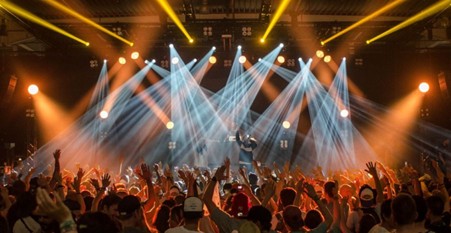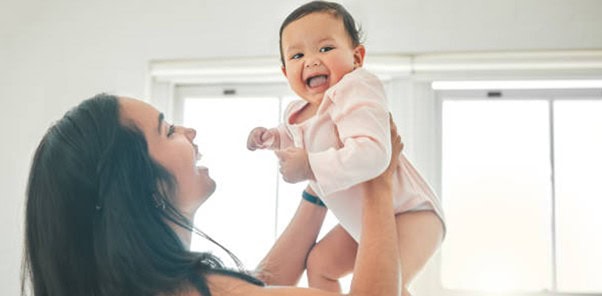In today’s competitive marketplace, businesses need more than just great products or services—they need memorable experiences that connect with their audience. That’s where event marketing comes into play. With the right event marketing strategies, brands can not only increase brand activation but also foster long-term brand loyalty.
Whether you’re launching a new product, hosting a corporate event, or sponsoring a major festival, your approach to event marketing can make or break your brand perception.
Let’s explore these powerful strategies that turn events into brand-building opportunities in this article.
What Is Event Marketing?
Event marketing refers to the strategy of promoting a brand, product, or service through in-person or virtual events. These events are designed to create engaging experiences that resonate with your audience and drive interaction with your brand.
Why Event Marketing Matters
- Brand Activation: Events are a powerful way to bring your brand to life. They provide a platform to introduce your brand values, mission, and personality directly to your target audience.
- Brand Loyalty: When consumers have a positive, memorable experience with a brand, they are more likely to remain loyal and recommend it to others.
Top Event Marketing Strategies for Brand Activation & Loyalty
1. Create Interactive Brand Experiences
Go beyond the traditional booth or banner. Interactive elements such as VR demos, product trials, gamification, and photo booths encourage attendees to participate, not just observe. These hands-on experiences build emotional connections and improve brand recall. For example, Red Bull’s Flugtag invites participants to build and fly their own human-powered aircraft. It’s quirky, interactive, and perfectly aligned with Red Bull’s “gives you wings” branding. The result? Viral content and massive brand engagement.
Tip: Personalization is key. Tailor experiences to your audience’s interests for a stronger impact.
2. Leverage Influencers and Brand Ambassadors
Collaborate with influencers who align with your brand values. Their endorsement can add credibility and attract their loyal followers to your event. Consider having them do live coverage or meet-and-greets to boost visibility. For example, Fenty Beauty launched with pop-up shops where influencers gave live demos and tutorials. By leveraging beauty influencers on Instagram and YouTube, the brand generated hype and saw $100M in sales within 40 days.
3. Integrate Social Media Engagement
Create a branded hashtag, encourage live posting, and run contests or giveaways for those who share their experience online. Platforms like Instagram, TikTok, and LinkedIn can amplify your event in real-time. For instance, you can see this strategy at Coachella, brands like Revolve host exclusive parties with custom hashtags, glam stations, and Instagrammable settings—resulting in millions of social impressions and organic content from influencers and attendees.
Pro Tip: Offer a branded photo opportunity or backdrop where guests can snap and share photos. Reward them who post the photos with prizes or features.
4. Offer Exclusive Perks for Attendees
People love feeling special. Offering VIP access, early product releases, or loyalty rewards to event attendees makes them feel valued. These perks also create a sense of exclusivity that strengthens the customer-brand relationship. We can see this strategy from Nike’s SNKRS pop-up events, where they let loyal app users access limited-edition sneakers before they’re publicly released. It builds exclusivity and rewards brand loyalty.
5. Use Data to Personalize Follow-Up
Post-event follow-ups are a golden opportunity. Use event data (such as attendance, engagement metrics, and surveys) to create personalized email campaigns or offers. Showing attendees that you remember and value their participation boosts long-term engagement by follow up with thank-you emails, exclusive offers, and content related to what attendees engaged with most.
6. Partner with Other Brands
Co-branding events with like-minded businesses can expand your reach and offer more value to attendees. Strategic partnerships often lead to unique, high-quality experiences that increase brand exposure and consumer trust.
Tip: Partner with complementary brands to share costs, expand reach, and enhance the attendee experience, like Spotify x Starbucks who teamed up to host intimate music events and listening lounges. Starbucks customers got early access, while Spotify introduced its platform to a wider, engaged audience.
7. Measure ROI and Refine Your Approach
Track KPIs like attendance, engagement levels, social shares, and post-event sales. Use this data to refine your event marketing strategy for future activations. Analyzing what worked (and what didn’t) is essential for growth and consistency. Adobe Summit is one of the examples who uses this strategy. They track in-person vs. virtual engagement data to refine its hybrid event format, content offerings, and customer targeting.
Tip: Track metrics like:
- Attendance and registration numbers
- Social media engagement
- Brand sentiment (pre- and post-event)
- Conversion rates or sales lift
Bonus Tips to Elevate Your Event Marketing
- Invest in quality event branding: Consistent visuals, signage, and swag can reinforce brand identity.
- Incorporate storytelling: Tie your event theme back to your brand values or origin story.
- Make it shareable: Encourage guests to become brand storytellers through design and experiences.
- Go hybrid: Offer both in-person and virtual options to broaden your reach and inclusivity.
All in all, effective event marketing is more than just organizing a party—it’s about crafting experiences that activate your brand and build emotional loyalty. By focusing on interactive engagement, influencer partnerships, social amplification, exclusivity, and smart data use, your brand can create moments that truly stick with your audience.
Start small, think big, and measure everything. With the right strategy, even a modest event can turn into a viral success and a loyalty-driving machine.
References:
1. https://www.redbull.com/us-en/events/red-bull-flugtag
2. https://www.forbes.com/sites/rachelarthur/2017/10/06/fenty-beauty-100-million-sales-40-days/
3. https://www.glossy.co/fashion/how-revolve-became-coachellas-most-influential-brand/
4. https://www.businessinsider.com/nikes-snkrs-app-pop-up-events-success-2019-1
5. https://www.salesforce.com/blog/how-dreamforce-drives-engagement/
6. https://news.starbucks.com/press-releases/starbucks-and-spotify-announce-music-ecosystem-partnership
7. https://eventmarketer.com/article/adobe-summit-recap-insights-on-virtual-events-and-roi/





